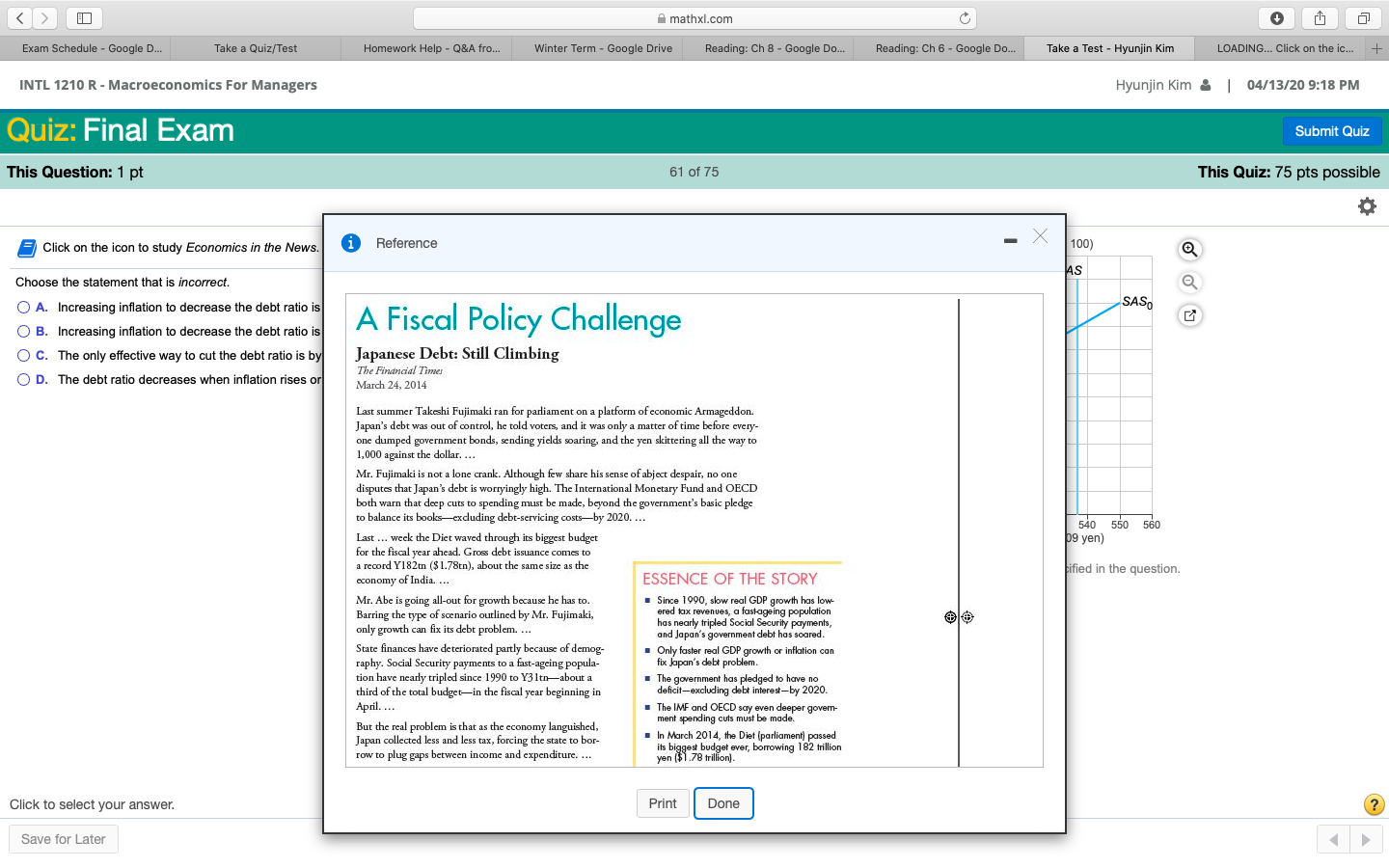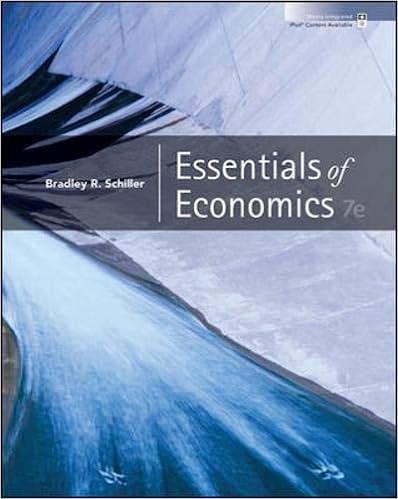Choose the statement that is incorrect.
A.
Increasing inflation to decrease the debt ratio is unpopular because inflation reduces the savings of consumers.
B.
Increasing inflation to decrease the debt ratio is unpopular because inflation reduces the real wages of workers.
C.
The only effective way to cut the debt ratio is by increasing the growth rate of GDP.
D.
The debt ratio decreases when inflation rises or faster economic growth occurs.
O mathxl.com G Exam Schedule - Google D.. Take a Quiz/Test Homework Help - Q&A fro. Winter Term - Google Drive Reading: Ch 8 - Google Do.. Reading: Ch 6 - Google Do. Take a Test - Hyunjin Kim LOADING.. Click on the ic.. INTL 1210 R - Macroeconomics For Managers Hyunjin Kim & | 04/13/20 9:18 PM Quiz: Final Exam Submit Quiz This Question: 1 pt 61 of 75 This Quiz: 75 pts possible Click on the icon to study Economics in the News. i Reference - X 100) AS Choose the statement that is incorrect. O A. Increasing inflation to decrease the debt ratio is O B. Increasing inflation to decrease the debt ratio is A Fiscal Policy Challenge SASo O C. The only effective way to cut the debt ratio is by Japanese Debt: Still Climbing O D. The debt ratio decreases when inflation rises or The Financial Times March 24, 2014 Last summer Takeshi Fujimaki ran for parliament on a platform of economic Armageddon. Japan's debt was out of control, he told voters, and it was only a matter of time before every- one dumped government bonds, sending yields soaring, and the yen skittering all the way to 1,000 against the dollar. ... Mr. Fujimaki is not a lone crank. Although few share his sense of abject despair, no one disputes that Japan's debt is worryingly high. The International Monetary Fund and OECD both warn that deep cuts to spending must be made, beyond the government's basic pledge to balance its books-excluding debt-servicing costs-by 2020. ... 540 560 Last ... week the Diet waved through its biggest budget 9 yen) for the fiscal year ahead. Gross debt issuance comes to record Y182t ($ 1.78tn), about the same size as the ESSENCE OF THE STORY ified in the question. economy of India. ... Mr. Abe is going all-out for growth because he has to. " Since 1990, slow real GDP growth has low Barring the type of scenario outlined by Mr. Fujimaki, ered tax revenues, a fastageing population only growth can fix its debt problem. ... has nearly tripled Social Security payments, and Japan's government debt has soared. State finances have deteriorated partly because of demog- Only faster real GDP growth or inflation can raphy. Social Security payments to a fast-ageing popula- fix Japan's debt problem. tion have nearly tripled since 1990 to Y3Itn-about a The government has pledged to have no third of the total budget-in the fiscal year beginning in deficit-excluding debt interest-by 2020 April. ... The IMF and OECD say even deeper govern- But the real problem is that as the economy languished, ment spending cuts must be made. Japan collected less and less tax, forcing the state to bor- In March 2014, the Diet (parliament) passed row to plug gaps between income and expenditure. ... its biggest budget ever, borrowing 182 trillion yen ($1.78 trillion). Click to select your answer. Print Done ? Save for Later







